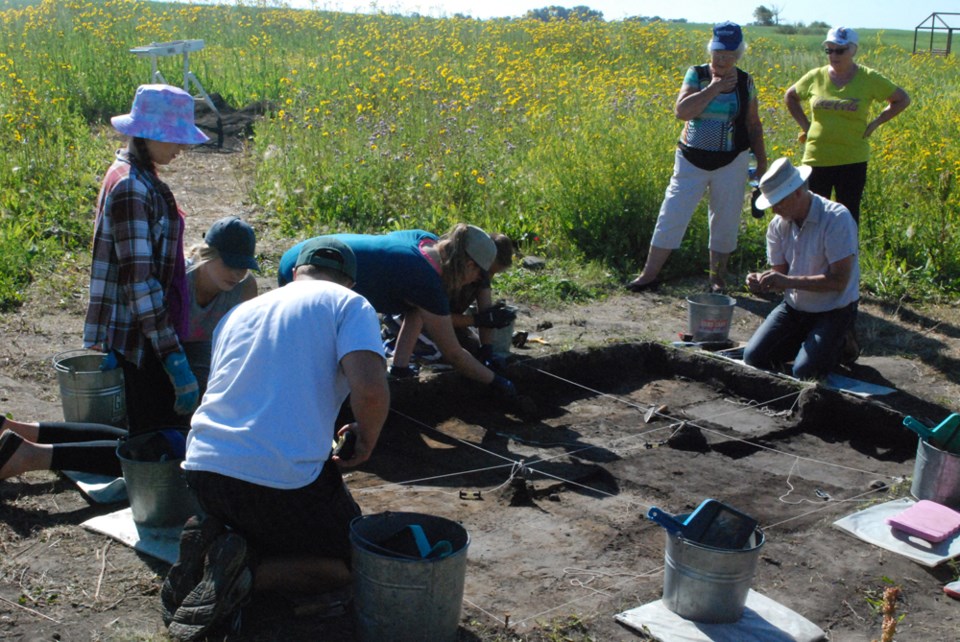The Humboldt and District Museum and Gallery got to discover a little more about Original Humboldt with their annual archeological dig July 24-28.
This year, the crew, which included members from Western Heritage and, for the first time, the Saskatchewan Archeological Society, and volunteers continued digging around the Telegraph Station on the southeast side of the site.
While it is unclear where exactly the Telegraph Station was specifically, there is still plenty to be found at the site, including broken glass and ceramic, as well as wooden beads.
Karin Steuber and Aurora Bowery from the Archeological Society and Carmen Vanderzwan from Western Heritage were on hand during the dig to map out the site and record the findings.
Steuber says this is a great way to introduce archeology to people in a way that connects them with where they are from.
History in this province is fascinating, she says, and this is a great way to expose people to that.
“Whenever somebody thinks about archeology, they think about Egypt and the pyramids.”
Handling the finds at the Original Humboldt site, the volunteers have the opportunity to hold something that no human has held for over 150 years, says Steuber, and in other sites even longer.
“Saskatchewan is interesting, it has over 10,000 years of human history, so it’s older than the pyramids in Egypt.”
The finds at the site can tell a lot about how the Weldon’s lived on the site as Catherine performed her duties as telegraph operator and George worked on the telegraph line.
“If we could find more remnants of bottle glass, it tells us what those bottles would have contained; whether it was medicine or beverages.”
Humboldt and District Museum and Gallery Director, Jennifer Fitzpatrick is excited for every piece they find at the sit since every discovery means a different piece of a very large puzzle and each one comes with its own story.
“You wonder about the significance of someone losing a 5 cent piece. It was only 5 cents but a 5 cent piece at that time meant a lot.”
Being able to share the site and its discoveries with volunteers this week is always special, says Fitzpatrick because she and the staff get to hear about the volunteers’ own excitement about being involved with finds.
While digging at the site, Steuber says they are trying to find evidence of where the structure stood. They found a lot of nails and even baked clay which was put in between logs to keep out wind and moisture but nothing yet pertaining to where the walls of the home once stood.
“We’re getting interesting artifacts that are coming out, things that would have been thrown away, but we haven’t found any walls or anything yet. But that could still be yet to come.”
While most of the wood could have disintegrated by this point in time, Steuber says that they may be able to find some remaining wood or disturbances in the soil.
With the amount of glass and nails that they have been finding at the site, the structure is definiately near by, says Bowery.
If the soil was disturbed to add some structural integrity to the walls, they would be able to see the difference in the soil, she says.
“When you’d dug through it, you’d actually see the sediment dip into a pit,” says Bowery. “That’s likely where the wall was.”
The annual digs at the site have been taking place since 2009 with digs at both the telegraph station and Fort Denison on the northwest side of the site. All of it is to understand and interpret the site to the best of their ability, says Fitzpatrick.
“I believe we have a good idea of the location of the telegraph building itself but part of our task is just to find where objects are and know how to interpret them.”
While a lot has gone on with the Original Humboldt site, especially this year with the June 8 event and Original Humboldt artifacts up at the Humboldt and District Museum, Fitzpatrick says there is more to come.



